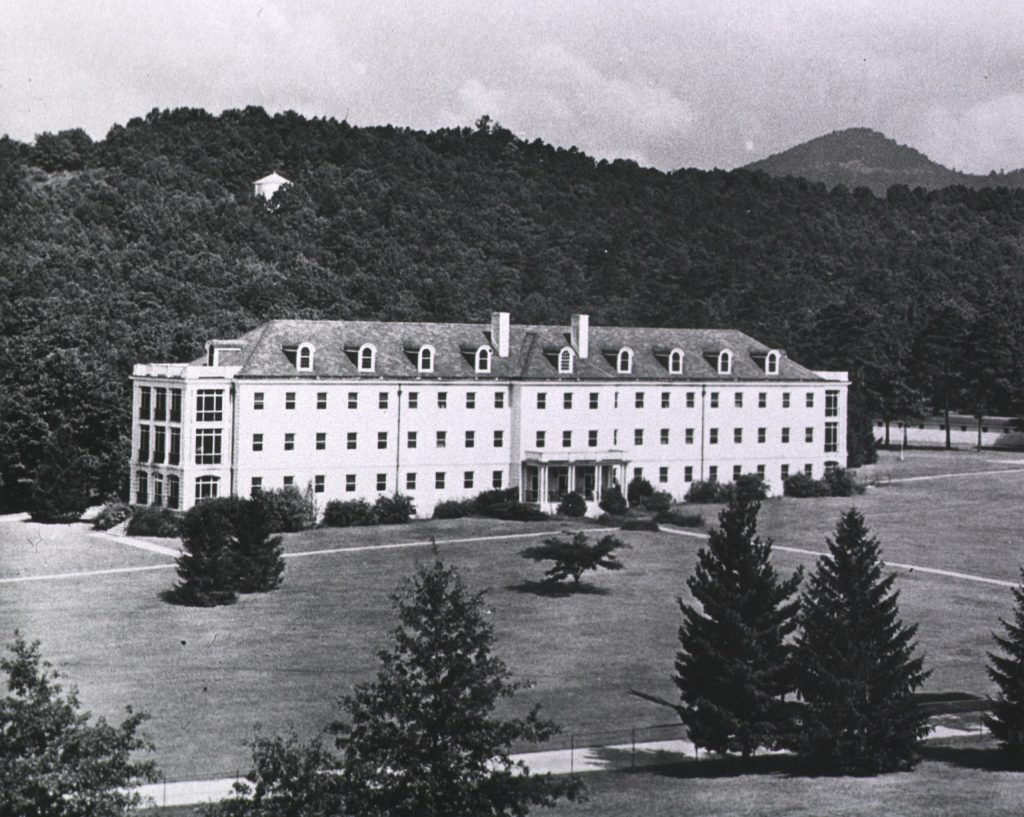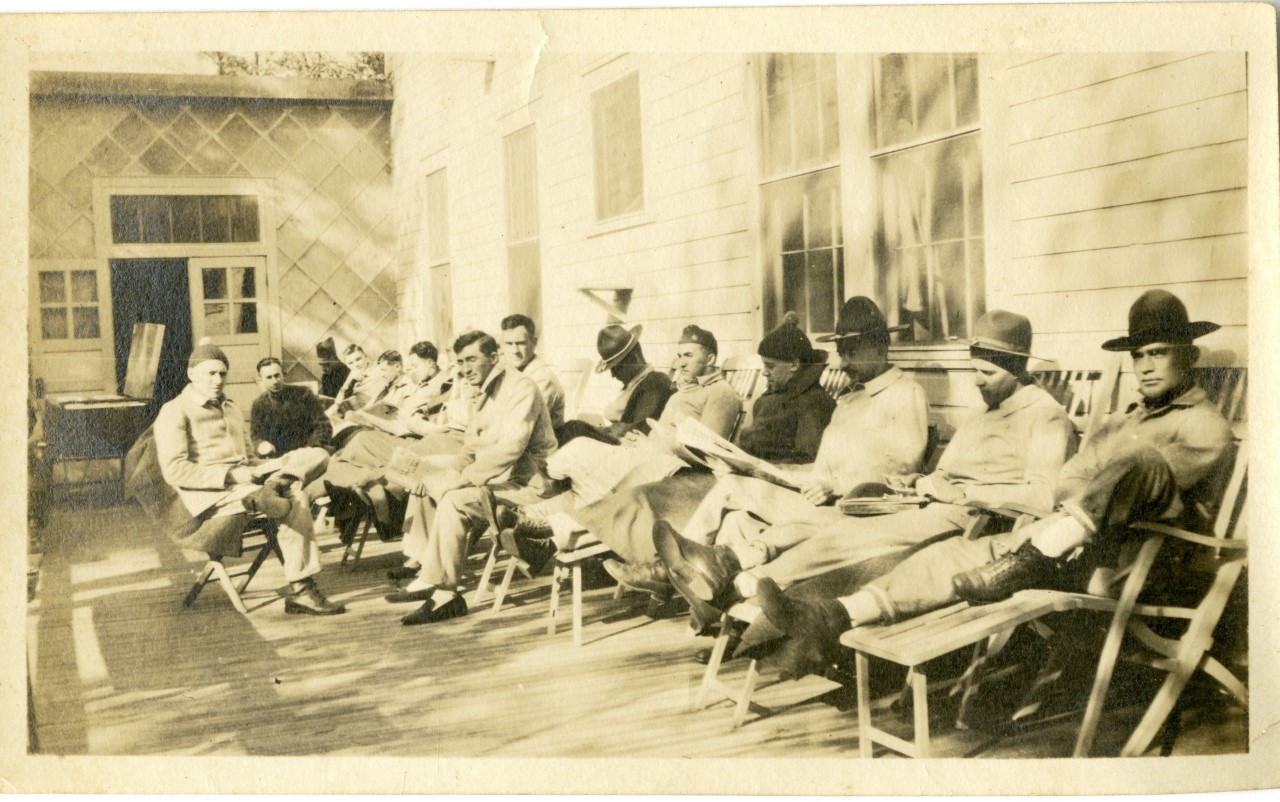
After the United States entered World War I in 1917, the government hastily built new facilities both to train Army medical personnel and to provide care for soldiers wounded during the fighting or stricken with disease. The War Department set up many hospitals during and immediately after the war expressly for the purposes of treating service members with tuberculosis, which was the third leading cause of death among Americans during this period.
The military completed its largest tuberculosis hospital at Oteen, North Carolina, near the city of Asheville at the foothills of the Smokey Mountains, in early 1919. Asheville at that time was a popular destination among tuberculosis sufferers, who sojourned there to enjoy the restorative benefits of the clean mountain air. In 1920, the Army handed over most of its medical facilities, Oteen included, to the U.S. Public Health Service (PHS). Two years later, PHS transferred Oteen and the other hospitals in its system that specialized in Veteran care to the newly established Veterans’ Bureau.
In its first two years of operation under the Army and PHS, Oteen admitted over 5,000 patients. The sprawling, 346-acre campus included forty-six tuberculosis wards to house men undergoing treatment. Oteen quickly established itself as the nation’s top treatment center for soldiers and Veterans with tubercular or other respiratory ailments. It also led the way in the development and teaching of tuberculosis protocols.
In the early 1920s, the hospital hosted several training programs for doctors and nurses interested in learning the latest diagnosis and treatment methods for patients suffering from the disease. Throughout the decade and into the next, the Veterans’ Bureau made major investments in the infrastructure at Oteen, replacing the wood-frame tuberculosis wards and other structures with larger, more durable buildings of concrete and steel.
The centerpiece of this new construction was the stately, four-story Administration building, completed in 1928 at a cost of $750,000, which contained laboratories, operating rooms, and additional bed space. Oteen’s growth continued after the Veterans’ Administration replaced the Veterans’ Bureau in 1930. In 1932, the facility added four new hospitals wards, a dining hall, and two nurse dormitories for training rotations.

In addition to providing medical care, the hospital in its initial years included a Reconstruction Department dedicated to the rehabilitation of the infirm. The physical and occupational therapy programs offered at Oteen aimed to return men to military service. If that was not possible, they focused on helping patients adapt to their disabilities and learn new skills. Very few of the Reconstruction Aides were trained therapists; instead, they were artists, crafts persons, and teachers. At Oteen, they taught basic education classes like reading and writing, but also printing, painting, silversmithing, weaving, and even beekeeping. These activities were designed to improve dexterity, mental resilience, and morale while also preparing disabled soldiers and Veterans for their return to civilian life.
In 1967, a new hospital, now known as the Charles George VA Medical Center, took the place of the medical complex on the original Oteen campus, although some of the older buildings remained in use. Its days as one of the premier tuberculosis hospitals have long passed, thanks to advances in the detection, control, and treatment of the disease that have reduced tuberculosis case rates in the United States to among the lowest in the world. An important legacy of its early years lives on, however, as the medical center continues to serve as a focal point for the training and education of doctors, through its academic partnerships with area medical schools.
By Heather South, Lead Archivist, North Carolina Western Regional Archives and Rodney Doty, Visual Information Specialist, Charles George VA Medical Center
Share this story
Related Stories

History of VA in 100 Objects
Object 96: Postcard of Veterans Vocational School
In 1918, the government created the first nationwide vocational training system to help disabled Veterans acquire new occupational skills and find meaningful work. Over the next 10 years, more than 100,000 Veterans completed training programs in every field from agriculture and manufacturing to business and photography.

History of VA in 100 Objects
Object 95: 1840 Census of Pensioners
In a first, the 1840 census collected data on Veterans and widows receiving a pension from the federal government. The government published its findings in a stand-alone volume titled “A Census of Pensioners for Revolutionary or Military Services.”

History of VA in 100 Objects
Object 94: Southern Branch of the National Home
The Southern Branch of the National Home for Disabled Volunteer Soldiers opened in Hampton, Virginia, in late 1870. The circumstances surrounding the purchase of the property, however, prompted an investigation into the first president of the National Home’s Board of Managers, Benjamin Butler.


